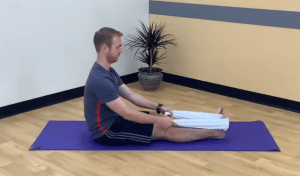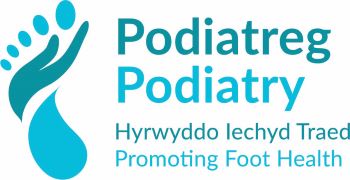Calf stretching exercises
 As part of your treatment plan, your Podiatrist has advised that you need to stretch to increase, flexibility and reduce muscle tightness of your calf muscles and Achilles tendon.
As part of your treatment plan, your Podiatrist has advised that you need to stretch to increase, flexibility and reduce muscle tightness of your calf muscles and Achilles tendon.
The calf muscles are at the back of your lower leg. They are connected to your heel via the Achilles tendon. We use our calf muscles a lot and they can become tight as a result of daily activity, normal aging and some medical conditions such as diabetes.
- Stretch twice a day.
- Stretch before and after physical activity.
- Hold your stretch for 20-30 seconds.
- Stretch left and right sides approximately 5 times.
- Do NOT bounce when stretching.
It is normal to feel some discomfort with stretching but the stretch should not be painful. If you have new pain or your current symptoms worsen stop doing the exercises.

- Whilst in a seated position with your legs out straight, loop a towel around the ball of your foot.
- Keeping your knee straight, pull the ends of the towel towards you.
- Maintain your posture and avoid slouching.
- You may feel discomfort behind your knee’s or your hamstring muscles at the back of your legs as you stretch.
 Stand facing the wall, with your arms straight. Place hands shoulder width apart on the wall.
Stand facing the wall, with your arms straight. Place hands shoulder width apart on the wall.- Place one foot behind the other hip distance apart. Slowly bend your front knee, keeping your back leg straight and heel on the floor. Keep your posture and your back straight.
- Switch legs and repeat.
 Stand on the edge of a step, holding a handrail for support.
Stand on the edge of a step, holding a handrail for support.- Your heels should be over the edge of the step.
- Hold for 5-10 secs. Repeat three times and three times per day.
- These can then progress to single leg holds.
 Hold onto something for support.
Hold onto something for support.- Place both feet on the bottom step of the stairs hip-width apart.
- Slide one foot back until only the ball of the foot remains on the step.
- Keeping this knee straight, bend the opposite knee and lower the heel off the step until a tightening is felt in the calf.
- Hold for 30 seconds and relax.
- Repeat 3 times each side – 3 times per day.

- Stand on the edge of a step, holding a handrail for support, on two feet.
- Your heels should be over the edge of the step.
- Lift up onto your toes.
- Taking your weight onto the affected leg, slowly lower back to your starting point. If you have symptoms in both legs, then alternate between legs when lowering.
- Repeat 15 times on each affected leg. Repeat three times per day.
- Build up to 20 times on each affected leg up to five times per day.
If your problem does not improve as you would expect with the self-care exercises, after 6-12 weeks of following the advice, you should contact a healthcare professional for advice.
This may be your GP, Pharmacist, NHS Podiatry Service or a Private Podiatrist. Please make sure your podiatrist is registered with the Health and Care Professions Council and look out for the letters HCPC after their name.
Please note good compliance with daily stretching may take up to 6 – 8 weeks before the benefits are felt.

 Stand facing the wall, with your arms straight. Place hands shoulder width apart on the wall.
Stand facing the wall, with your arms straight. Place hands shoulder width apart on the wall. Stand on the edge of a step, holding a handrail for support.
Stand on the edge of a step, holding a handrail for support. Hold onto something for support.
Hold onto something for support.
